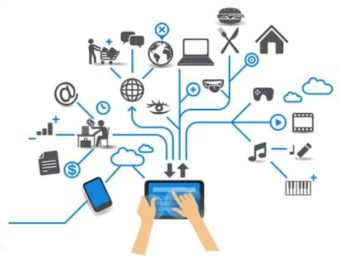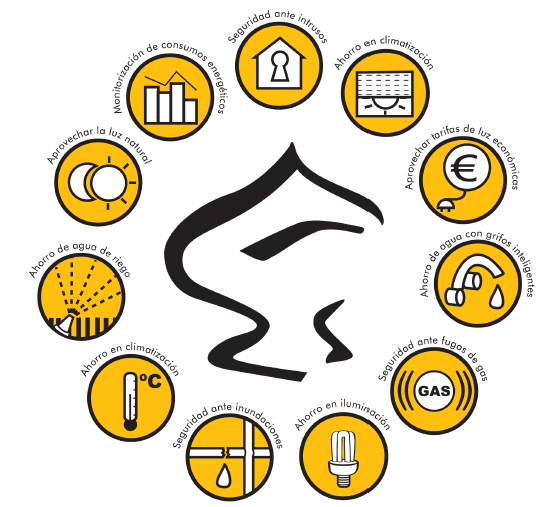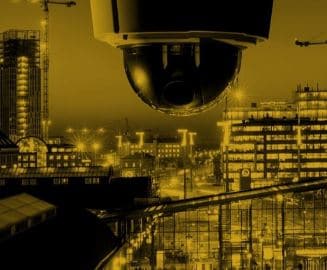-
Phone Number
-
Email Address
Technologies are not only generating new opportunities of business, are and will be a key element in our lives that They will help us improve it if we use them consistently and this is where domotics for homes come in with all its benefits and advantages to facilitate the life.
Architecture is changing to adapt and today, it's time see how he's doing…
Content menu:
They are a set of facilities or equipment technology aimed at controlling and automating the management of a building or home with the purpose of improve the life of the occupants.
The advantages of home automation buildings is that provides comfort, security, management and use of energy equipment or facilities, savings in electricity, water and fuel consumption – energy.
 With these devices you can can realize an intelligent management of the installations of air conditioning (More information here), lighting, water hot, as well as other equipment and installations for make an adequate use of energy.
With these devices you can can realize an intelligent management of the installations of air conditioning (More information here), lighting, water hot, as well as other equipment and installations for make an adequate use of energy.
The systems to monitor consumption before the home automation building allow you to know in each moment what amount of energy is consumed, so that said information helps the user to adapt their habits with the objective of reducing the cost of your invoice and improving the energy efficiency.
Faced with the contribution of energy saving, the home automation systems in architecture have a variety of applications with a wide range of possibilities, highlighting as most important the following:
This is where home automation control comes into play in homes... How does home automation affect energy saving and indoor comfort in buildings and homes?
In the following infographic of the company GIRA we can test what are its most general applications. so let's see home automation applications in the dwelling:

These regulation and control systems in the home allow equally that you can monitor and continuously monitor the status and security of people as well as property in buildings, allowing to detect and manage incidents and breakdowns to be able to correct them as soon as possible.
 To do this, the teams most used are alarms, automatic closing systems holes, surveillance cameras, smoke detectors, gas, of water, or alterations in the electrical supply, etc…
To do this, the teams most used are alarms, automatic closing systems holes, surveillance cameras, smoke detectors, gas, of water, or alterations in the electrical supply, etc…
As for anti-intrusion systems, they are fundamentally of two types, one to protect access to a parcel, using infrared barriers on the outside, gardens, doors and windows with contact sensors, and a second type of protection of the interior of the house that uses detectors of movement with ultrasound and infrared technology.
Through certain control systems and regulation in homes any problem of this type, notifying the user in case of failure and also causing the cut off of the gas or water supply, or from any other supply to avoid major risks.
There are also systems that measure water quality to facilitate the proper recycling of gray water, as well as intelligent irrigation control systems with sensors moisture, capable of measuring the degree of soil moisture to water it when necessary and taps capable of controlling the flow rate and water temperature.
These allow direct communication between the control panel and the user so that he can be notified in the event that there is an anomaly in the operation of the facilities or any equipment.
The following video is an example of home automation perfect in homes combined with the internet of things based on new technologies to incorporate "robots" that are attentive to all the data of information that move in our home:
When we deal with design in the conception of a home automation project and its economic viability must be considered its purpose, which is has applications or electronic and computer tools with the aim of improve the conditions of habitability .
To achieve adequate comfort inside the home as well as being able to save energy, it is necessary to be able zone the home or building with the home automation system depending on the conditions of use and thermal required in each room, in order to carry out an adequate management separately of each zone in depending on your needs.
The most important factors to take into account in this zoning or in a home automation installation in dwelling will be the use to which each room is intended considering separately the day and night areas, as well as the amount of solar radiation received by each zone in function of its design and orientation .
The definition and choice of home automation systems in each case it will depend to a large extent on the determining factors architectural type mentioned above, but also, also it has to adapt to the way of life of the user, so that the profile of this will have a significant influence, that is, whether it is It is about an elderly person, a young person, if he lives alone, if he is a family with children, a person with some type of disability, etc
A perfect example of various systems that we can implement in the house is the following scheme of the VIMAR house.
To carry out an adequate home automation project for a housing an in-depth analysis of the benefits and must attend to the resolution of problems that could appear in the actual project, so they should be consider the following phases in its development:
From the economic point of view, the installation of a home automation system does not have to be expensive , so it may be quite viable for any home or building, since with a small investment can achieve considerable energy savings, in each case the cost depends on what level of domotization is going to implant.
There are three levels of domotization of a housing : the minimum level or level 1, level 2 intermediate and level 3 or excellent, establishing said scale according to the weighting of the devices required by the itself and the needs covered.
It is interesting to consult the Spanish Home Automation Association and Inmotics... HERE to keep up to date on the subject.
If you liked the article, rate it and share!